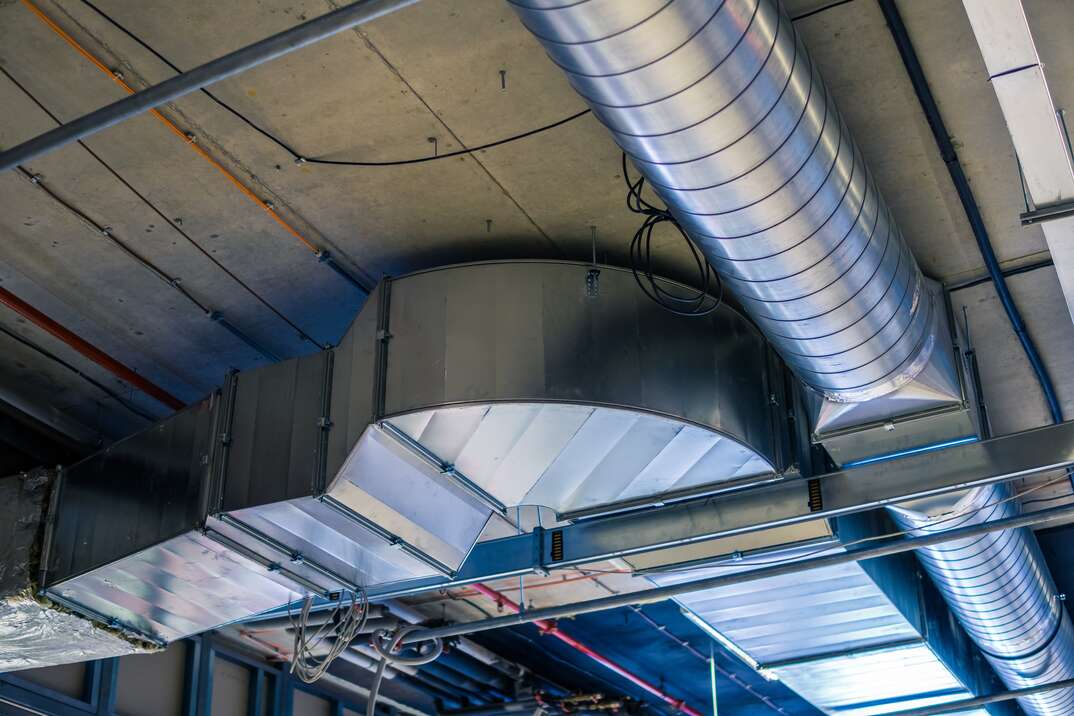- AppliancesElectriciansHVACLandscapingLocksmithPest ControlPlumbingRenovationRoofingT V RepairAll Home Improvement
- Car AccidentClass ActionCorporate LawCriminal DefenseDivorce LawEmployment LawFamily LawFinancial LawLegal AidMedical Injury LawyersMedical MalpracticeReal Estate LawWater Fire RestorationAll Legal
- InvestmentRetirementAll Finance
- Animal InsuranceAutoGeneral InsuranceHealth PolicyHome RentersAll Insurance
- DentalHealth SpecialistsAll Medical
- Animal CareVeterinaryAll Pets
- Auto GlassTowingAll Automotive
What Is a Central Ventilation System?

Cracking a window in the dead of winter isn't a very comfortable experience, but neither is breathing days-old air. As building codes require drafts to be sealed up, making homes more energy-efficient, they also block fresh air from entering.
Read More Heating and Cooling Articles
Central ventilation systems offer the perfect solution by pumping new life into stagnant living spaces. Explore the science behind these simple mechanical machines and how they use fresh air to improve health and comfort while protecting homes from moisture damage.
A centralized ventilation unit is a mechanical ventilator that exhausts stale air out of a building while supplying air from the outdoors.
The slow but continuous exchange removes pollution, helping improve indoor air quality. It also expels excess humidity generated by showering and cooking, which helps prevent mold and mildew from forming in the home.
How Does a Central Ventilation System Work?
Air ventilators work off a few basic scientific principles regarding air pressure. The units use fans to move air through a building's ductwork. The air ducts either remove or feed air into living spaces through vents, causing a fluctuation in the internal air pressure.
By default, air pressure always seeks to equalize itself. When indoor and outdoor air pressures are different, the air naturally moves to restore balance. This is the same principle behind the cause of wind, which is the air moving when barometric air pressure levels fluctuate outdoors.
More Related Articles:
- Hiring an HVAC Tech? Here are 5 Top Tips
- What's in My HVAC Technician's Van?
- HVAC Out? 5 Common Causes and Quick Fixes for Each
- How Much Does an HVAC Filter Cost?
- HVAC Upkeep Costs: Everything You Need to Know
Central mechanical ventilation systems fall into four categories.
Exhaust
Exhaust ventilation units use a powerful fan to force air out of a building and lower its air pressure. Because the pressure outside is higher, fresh air rushes into the building to replace exhausted air.
In older buildings, the air is typically drawn in through gaps and cracks. However, energy-efficient buildings can be equipped with vents that allow airflow between the indoor living spaces and the outdoors.
Exhaust systems are a cost-effective solution to ventilation due to their simplified design, but they can inadvertently draw in pollutants and fumes from garages, attics and crawl spaces. They also aren't a good fit for hot, humid climates where mold and moisture could become a problem.
Supply
This central air ventilation system raises air pressure higher than the outside air by pumping a steady supply of fresh air into the living spaces inside homes and offices. The incoming air freshens rooms while pushing stale air out of the building through vents and cracks.
Because they have a single source of incoming air, supply units are easy to equip with filters and dehumidifiers to condition the air, which can help control allergies and respiratory issues.
The units can cause damage inside attic and wall cavities by pushing warm, humid air into gaps and cracks. In cold climates, the moisture condenses when it meets the cool surfaces, such as exterior walls, and causes mildew and rot.
Balanced
A balanced air distribution system attempts to prevent air leakage by maintaining equal air pressure. It has both a fresh air supply and an exhaust fan system that work in harmony to move stale air out and draw new air in.
It requires two sets of air ducts, potentially taking space away from living spaces. In return, the machines offer a great deal of control over interior air quality and can be installed in any climate without the risk of moisture damage.
ERV
Energy recovery ventilators are a versatile solution to air dispenser needs. They can be installed as central ventilation systems for homes and office buildings or as decentralized ventilation systems placed in the windows or walls of individual rooms.
Aptly named, the ventilation system is fitted with a heat exchanger that recovers energy previously spent on tempering the indoor air and applies it to the unconditioned air as it enters the building. By using the exhausted air to warm or cool the incoming air, heat recovery systems preserve personal comfort while preventing spikes in heating and cooling costs.
Elocal Editorial Content is for educational and entertainment purposes only. Editorial Content should not be used as a substitute for advice from a licensed professional in your state reviewing your issue. Systems, equipment, issues and circumstances vary. Follow the manufacturer's safety precautions. The opinions, beliefs and viewpoints expressed by the eLocal Editorial Team and other third-party content providers do not necessarily reflect the opinions, beliefs and viewpoints of eLocal or its affiliate companies. Use of the Blog is subject to the
Website Terms and Conditions.The eLocal Editorial Team operates independently of eLocal USA's marketing and sales decisions.



